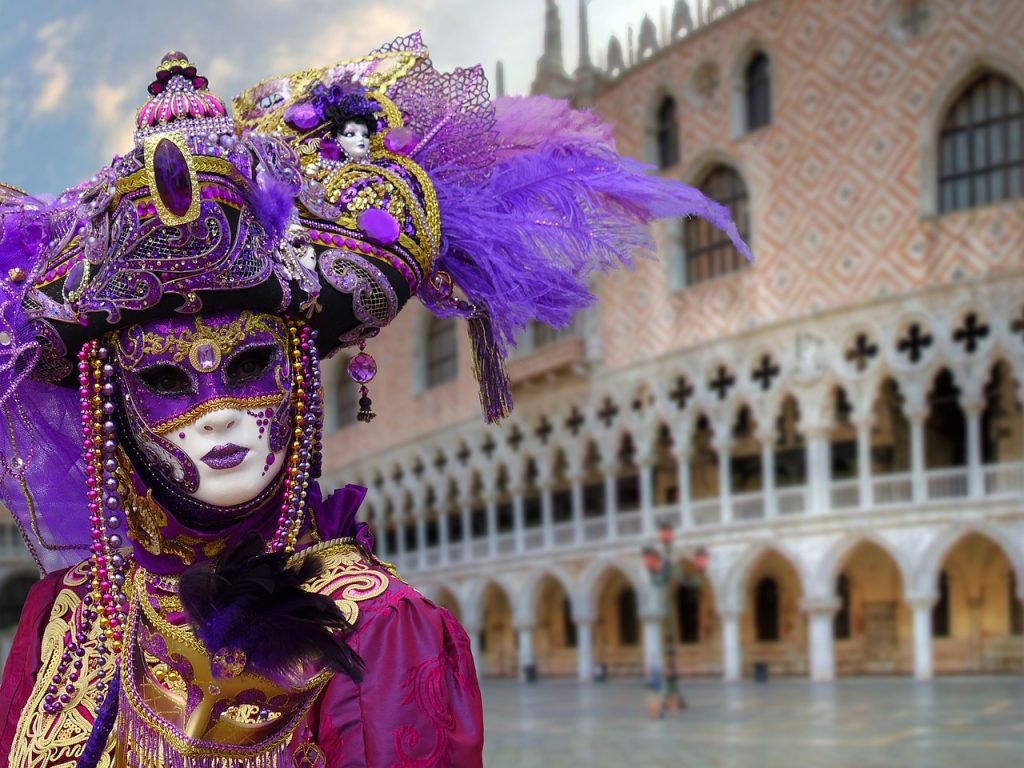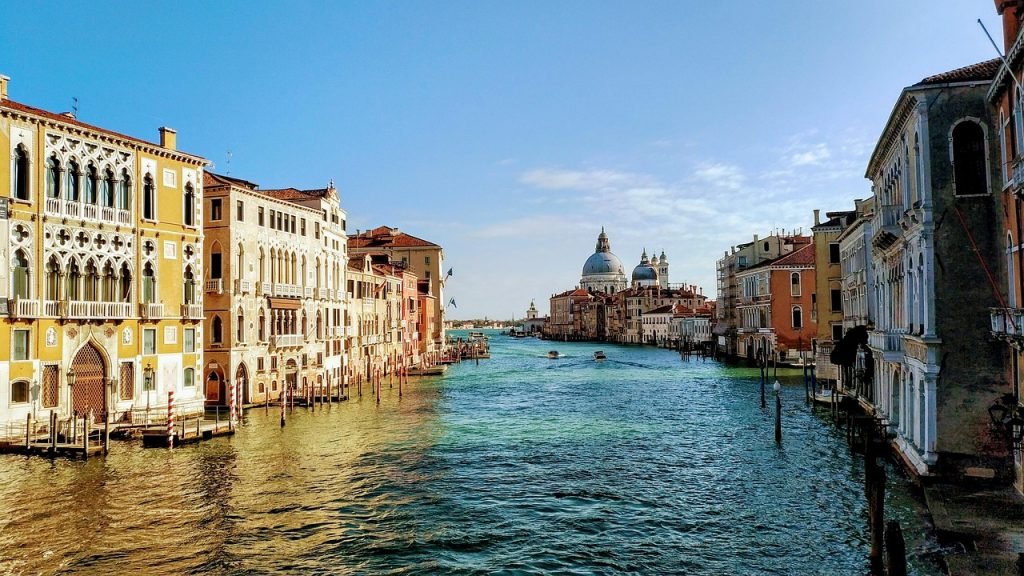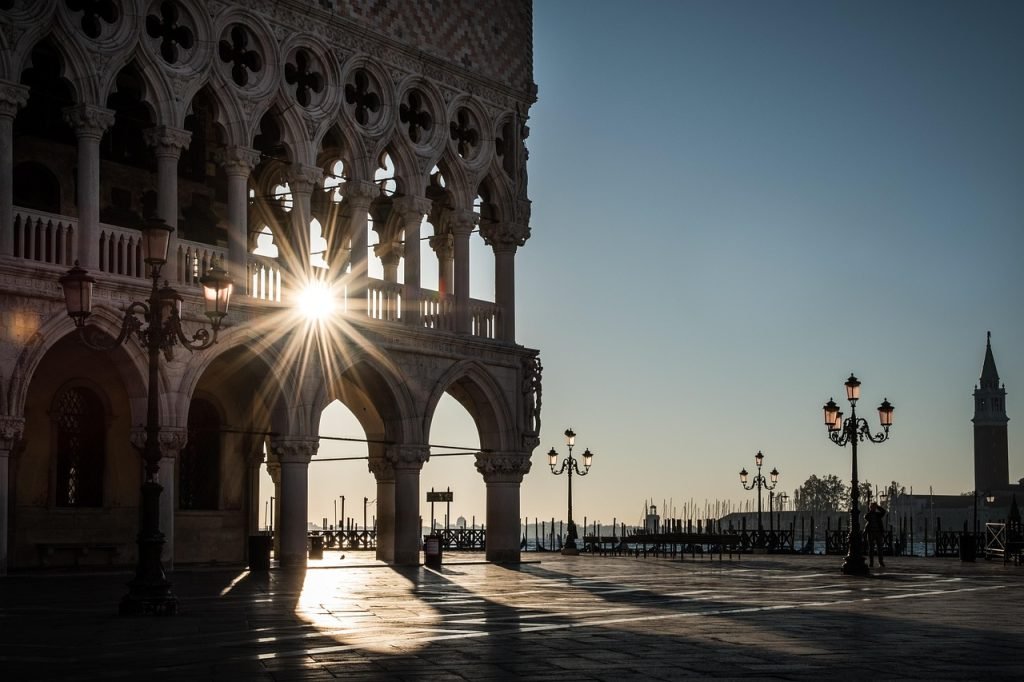After ten years working near Venice and visiting the city countless times, I’ve witnessed the full spectrum of Venice’s festival calendar. While tourists flock here for Carnevale—and yes, it’s spectacular—the true soul of Venetian celebration reveals itself in the city’s other traditional festivals, events that locals actually live for, rather than simply endure.
Let me be brutally honest about something: Carnevale, despite being our most famous festival, is also our most challenging. The February weather is unforgiving—thick fog blankets the lagoon for days, the cold seeps through your bones despite layers of wool, and the humidity makes everything feel perpetually damp. Add the dreaded acqua alta that can flood the city at a moment’s notice, and you have a recipe for discomfort that even the most elaborate masks can’t disguise.
But here’s the thing—you absolutely must experience Carnevale at least once in your lifetime. When you see those incredible masks, crafted by artisans whose families have been perfecting this art for centuries, when you witness people from around the world transforming themselves into living works of baroque art, when you feel the weight of this thousand-year-old tradition pressing down on the city like a beautiful, suffocating dream—you understand why Carnevale has become the stuff of legend.
The Festival That Belongs to Venetians: Festa del Redentore
Now, if you want to see Venice celebrating as Venetians truly are—not performing for cameras but living their traditions—come for the Festa del Redentore on the third weekend of July. This is their festival, born from the city’s deepest gratitude and maintained by unwavering local faith.
The history reaches back to July 20, 1577, when Venice finally emerged from the devastating plague that killed 50,000 people, including the great painter Titian. Imagine the ancestors’ relief, their overwhelming gratitude to be alive, to have survived what seemed like the end of the world. Doge Alvise I Mocenigo promised to build a magnificent church in thanksgiving, and Palladio’s architectural masterpiece on Giudecca Island became the focal point of the annual pilgrimage of gratitude.
What makes Redentore extraordinary isn’t just its spiritual significance—it’s how intimately woven it is into the fabric of Venetian life. Every year, we construct a temporary bridge of boats spanning the Giudecca Canal, allowing thousands of pilgrims to walk across the water to reach the Redentore church. The bridge opens at 7:00 PM, and by 11:30 PM, the sky erupts in the most spectacular fireworks display in the Saint Mark’s Basin.
The real magic happens on the water. Every Venetian family that owns a boat transform them into floating dining rooms where families gather for picnics in Saint Mark’s Basin. The lagoon becomes a constellation of twinkling lights, laughter echoing across the water, the aroma of traditional Venetian specialties drifting from boat to boat.
Expect crowds—thousands of locals and boats filling every inch of available space. Unlike Carnevale’s international spectacle, this is Venice celebrating for itself, with itself. The atmosphere is familial, communal, deeply rooted in something larger than tourism or performance.
The Poetry of Competition: Regata Storica
If Redentore represents Venice’s spiritual heart, then the Regata Storica—held on the first Sunday of September—showcases the city’s maritime soul. This traditional water pageant and boat racing competition dates back to the 13th century, originally introduced to celebrate naval victories when Venice dominated the seas.
The Historical Regatta on the Grand Canal is without doubt the most beautiful gondola competition in the world, but calling it merely a boat race misses the profound cultural significance. This is living history, a direct connection to the centuries when our maritime prowess built an empire that stretched across the Mediterranean.
The day begins with the Corteo Storico, a magnificent historical procession down the Grand Canal featuring dozens of period boats carrying participants dressed as doges, nobles, and citizens from Venice’s golden age. These aren’t costumes—they’re carefully researched historical reproductions, many created by the same families who have been dressing Venice’s elite for generations.
Then comes the racing—multiple categories of traditional Venetian boats competing in the ancient art of “voga alla veneta,” the city’s distinctive style of rowing while standing and facing forward. For years, this regatta served as a way of encouraging gondoliers to preserve their skills, privately financed until Venice joined Italy and it became a public celebration of Republican traditions.
Watching from the Rialto Bridge or claiming a spot along the Grand Canal fondamenta, you witness something unique: pure Venetian competitiveness channeled through centuries-old traditions. The rowers aren’t performing for tourists—they’re competing for neighborhood pride, family honor, and the continuation of skills passed down through generations.
The Living Calendar of Venice
What many visitors don’t understand is that Venice’s festival calendar follows the rhythm of lagoon life, each celebration timed to complement the natural and social cycles of this unique environment. Spring brings the Festa della Sensa in May, when Venice renews its eternal marriage to the sea—a ceremony dating back to 1000 AD when Doge Pietro II Orseolo set out to conquer Dalmatia.
Summer explodes with Redentore in July, when the weather is perfect for overnight celebrations on the water, and continues with the Venice International Film Festival in late August, transforming the Lido into a temporary capital of world cinema. Founded in 1932 as part of the Venice Biennale, it’s one of the oldest film festivals in the world, bringing international glamour to ancient stones.
September’s Regata Storica arrives with the perfect weather for outdoor spectating and the nostalgic beauty of early autumn light reflecting off the canal waters. November brings the Festa della Salute, another plague-related thanksgiving (this time for the 1630 epidemic), when Venetians again construct a temporary bridge—this time across the Grand Canal to reach the Basilica of Santa Maria della Salute.
The Authentic Experience vs. The Tourist Trap
During my years conducting bacaro tours and living through every iteration of our festival calendar, I’ve learned to distinguish between authentic celebration and tourist performance. Carnevale, despite its genuine historical roots, has become largely performative—beautiful, Instagram-worthy, but somehow disconnected from daily Venetian life.
The smaller festivals, the ones that don’t make international headlines, reveal the true character of the city. The Regata delle Befane in January, where brave souls row in costume across the freezing Grand Canal. The various neighborhood sagre (parish festivals) throughout the summer, where local communities gather in campos for simple celebrations of food, wine, and companionship.
These aren’t spectacles designed for external consumption—they’re expressions of a living culture that continues to evolve while maintaining its essential character. When I take visitors to experience these events, I always emphasize that they’re witnessing something real, not a recreation or tourist attraction.
Weather, Crowds, and Practical Wisdom
Let me share some hard-earned wisdom about festival timing in Venice. Carnevale’s February weather is genuinely challenging—pack layers, and prepare for potential flooding. The masks and costumes are extraordinary, but dress warmly underneath. The international crowds can be overwhelming, but the craftsmanship and historical continuity are unmatched.
Redentore in July offers perfect weather but brings massive local crowds. The entire Venetian population seems to converge on the Giudecca Canal area, and boat traffic reaches chaotic levels. But the summer evening atmosphere, the warm air carrying the scent of lagoon and festival food, the communal joy—it’s intoxicating.
The Regata Storica in September provides ideal conditions—warm but not hot, clear skies perfect for photography, comfortable temperatures for standing along the canals for hours. The crowds are significant but manageable, mostly Italian families and serious cultural enthusiasts rather than casual tourists.
Beyond the Postcards
After countless festival seasons, I’ve come to understand that Venice’s celebrations aren’t really about what you see—they’re about what you feel. The true festival experience happens in the spaces between official events: in the bacari where locals gather to discuss the morning’s regatta preparations, in the neighborhood campos where families prepare their boats for Redentore, in the workshops where artisans craft masks with techniques unchanged for centuries.
My advice to anyone seeking authentic festival experiences: arrive early, stay late, and spend time in the margins. The official events are spectacular, but the real Venice reveals itself in the conversations over spritz, the shared meals on boat decks, the spontaneous singing that erupts from groups of friends walking home through empty calli after midnight.
Venice’s festivals aren’t tourist attractions—they’re invitations to become, temporarily, part of something larger and older and more beautiful than ourselves. Whether you’re shivering in February fog watching elaborately masked figures glide through Carnevale mist, or floating on July waters waiting for Redentore fireworks to paint the sky, or cheering gondoliers racing down the September Grand Canal—you’re participating in an unbroken chain of celebration that stretches back centuries and will, God willing, continue for centuries more.
That’s the real magic of Venetian festivals: they transform observers into participants, tourists into temporary citizens, visitors into guardians of traditions that belong, ultimately, to all humanity.


